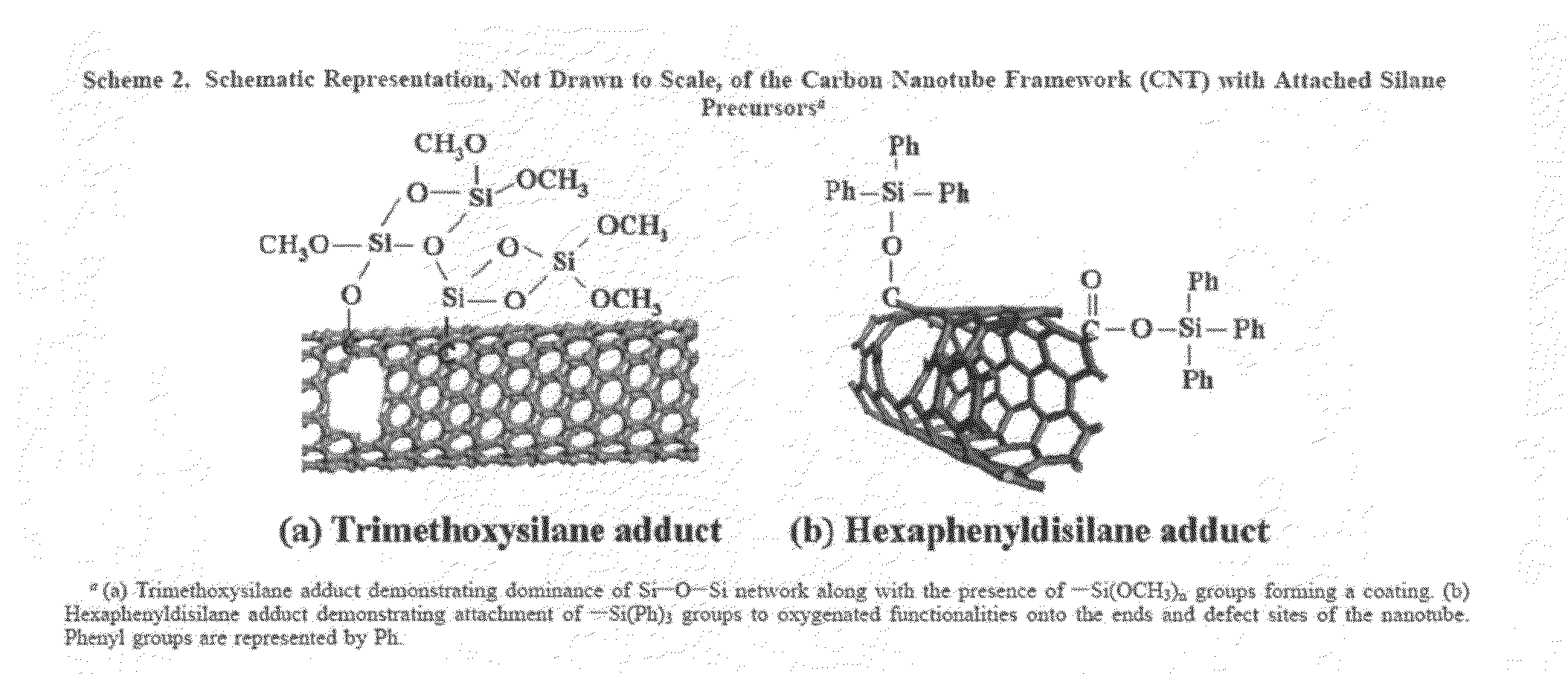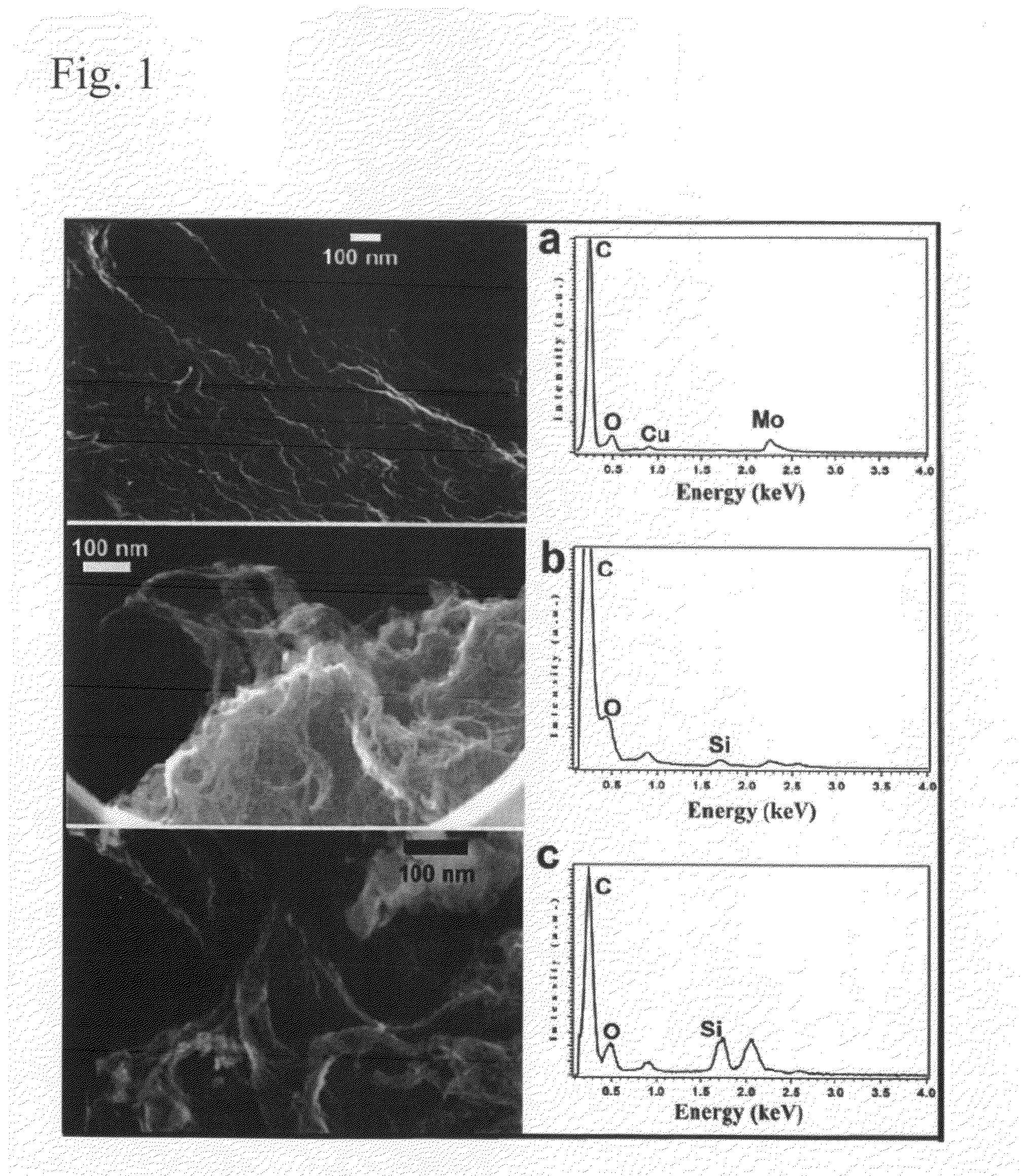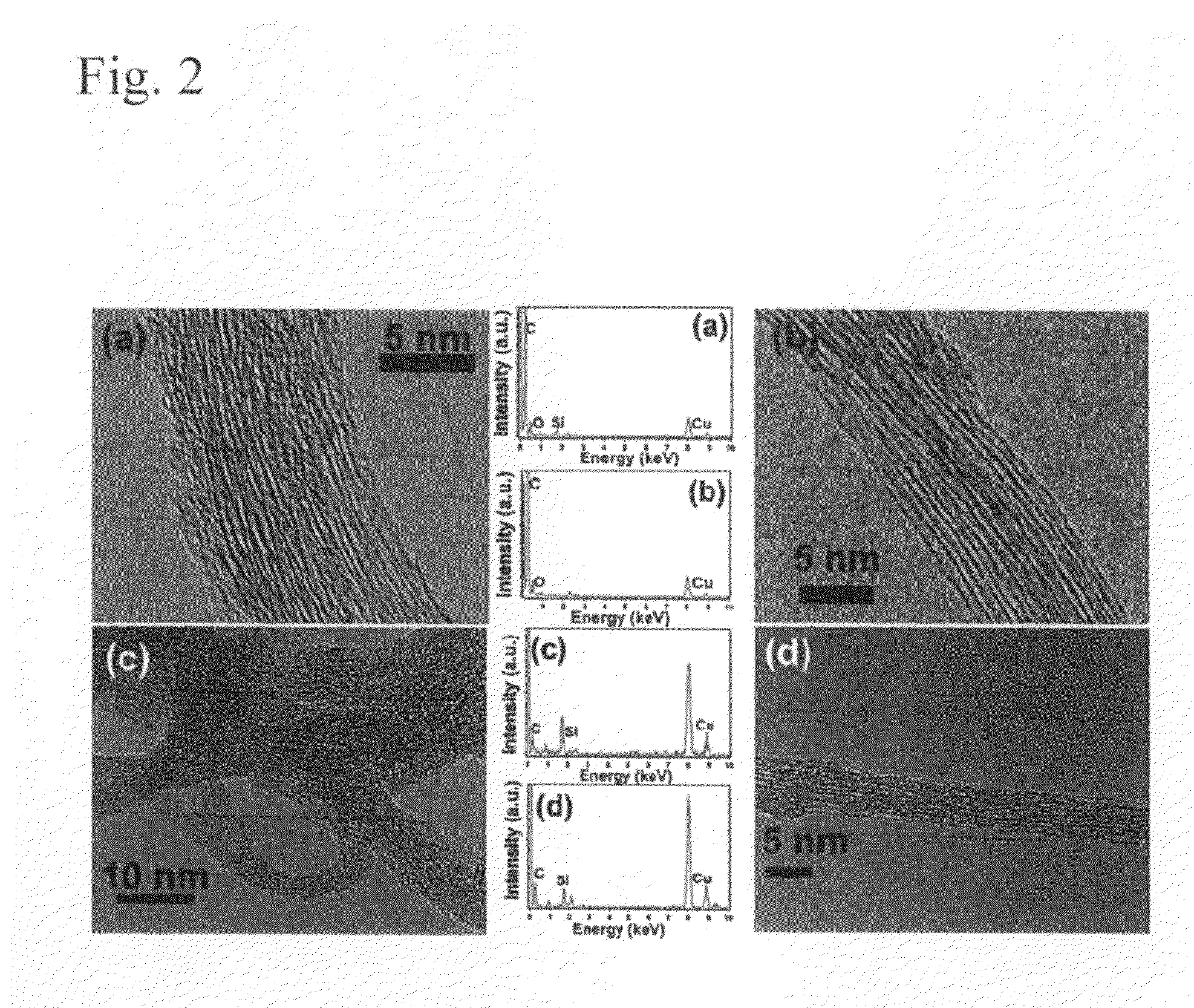Silylated carbon nanotubes and methods of making same
a carbon nanotube and silylation technology, applied in the field of silylation carbon nanotubes and methods of making same, can solve the problems of prior art attempts at silylation of nanotubes, major obstacles to their incorporation into functional devices, and control over electronic aspects
- Summary
- Abstract
- Description
- Claims
- Application Information
AI Technical Summary
Benefits of technology
Problems solved by technology
Method used
Image
Examples
examples
[0074]Pre-treatment of SWNTs. In order to ensure that the starting material, namely the unreacted SWNTs, were free of silicon, a known purification method was used to initially treat the tubes (Alvarez et al., Chem. Matter. 2002, 14, 1853). Specifically, a sample of nanotubes was suspended in a 0.2 M NaOH solution, while stirring for 24 h at 65° C. Upon filtration through a polycarbonate 0.2 μm membrane, the remaining solid was washed with deionized water until the pH was neutral. The sample was subsequently allowed to dry overnight in a desiccator (Herrera et al., J. Nanosci. Nanotech. 2003, 3, 133). SEM, TEM, and HRTEM images as well as EDS data (FIGS. 1 and 2) confirm that the starting material was free from any form of silicon. These samples are herein referred to as “SWNT starting materials.”
Control Experiment. In order to better understand the effect of only UV irradiation on the tube surface, a sample of base-treated SWNTs was placed in 2-propanol and was allowed to stir for ...
PUM
| Property | Measurement | Unit |
|---|---|---|
| solubility | aaaaa | aaaaa |
| solubility | aaaaa | aaaaa |
| diameter | aaaaa | aaaaa |
Abstract
Description
Claims
Application Information
 Login to View More
Login to View More - R&D
- Intellectual Property
- Life Sciences
- Materials
- Tech Scout
- Unparalleled Data Quality
- Higher Quality Content
- 60% Fewer Hallucinations
Browse by: Latest US Patents, China's latest patents, Technical Efficacy Thesaurus, Application Domain, Technology Topic, Popular Technical Reports.
© 2025 PatSnap. All rights reserved.Legal|Privacy policy|Modern Slavery Act Transparency Statement|Sitemap|About US| Contact US: help@patsnap.com



